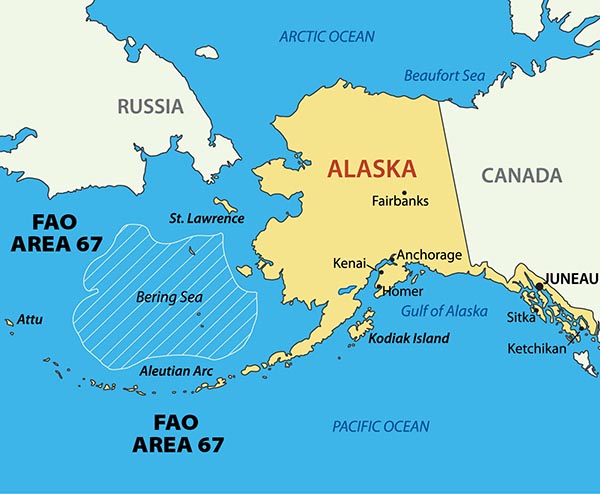YELLOWFIN SOLE (Limanda aspera) Harvested year long with the majority harvested in March through May and August through October, yellowfin sole are the most abundant flatfish in the eastern Bering Sea. They inhabit the eastern Bering Sea shelf and, in small part, the Aleutian Islands region. They are also found off British Columbia, Canada; north of the Bering Sea; and in the Sea of Japan along the Asian coast. The U.S. is responsible for the majority of the worldwide catch.
Foreign fisheries exploited yellowfin sole in the early 1960s, when catches averaged about 400,000 tons. As a result, annual catches declined to 50,000 tons in the 1970s. Abundance increased in the 1980s, with a biomass high of 227,000 tons recorded in 1985.
The fishery became fully domestic in 1991 with the cessation of joint venture fishing operations and is currently regulated under the Bering Sea – Aleutian Islands Groundfish Fishery Management Plan (FMP) in the Bering Sea/Aleutian Islands (BSAI) area.
Since 2003, all caught yellowfin sole must be retained for processing. Yellowfin sole’s population began to recover throughout the 1980’s and by 1990 management phased out all foreign fishing in U.S. waters.
Currently, yellowfin sole populations are abundant. Catch is monitored throughout the fishing season to ensure it doesn’t exceed harvest limits or limits on bycatch of halibut or crab.
